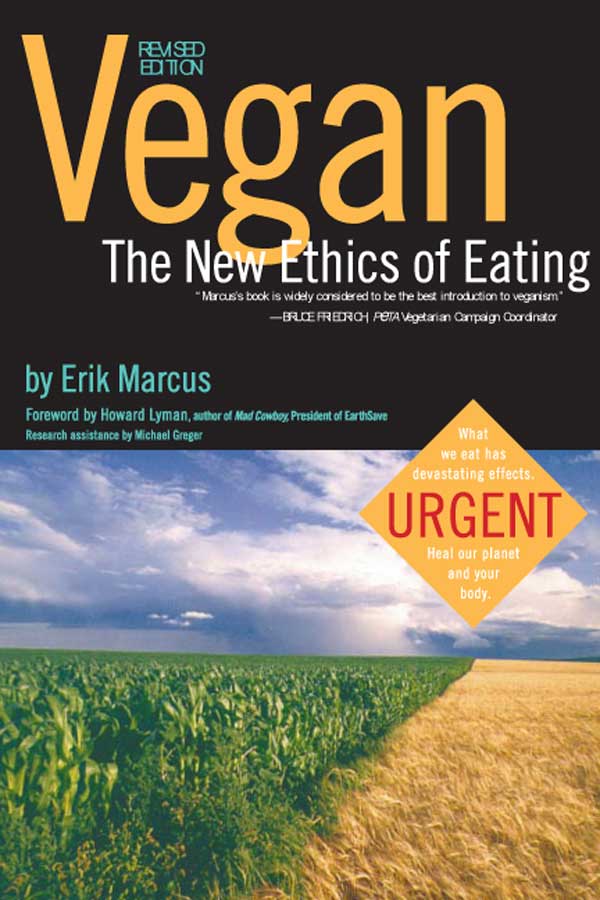Arguments[]
- Animal products often give people food poisoning. Meat, seafood, eggs and milk provide the ideal breeding grounds for bacteria such as Campylobacter jejuni (associated with poultry products), Escherichia coli 0157:H7 (ground beef), and Listeria monocytogenes (dairy products). Other less common pathogens included Bacillus cereus, Clostridium botulinum, Clostridium perfringens (found in beef), Shigella, and Staphylococcus aureus (found in pork).
- Diets which contain a large amount of meat and little fibre encourage colon cancer. Meats contain fat which requires the body to produce bile to digest. Meats are a medium for the growth of bacteria which can convert bile into carcinogenic substances. Diets high in fruits and vegetables, especially cruciferous vegetables, discourage the development of colon cancer
- The accumulation of toxins from the recycling of animals into animal feed
- Vegetarians have 40% less chance of developing bowel cancer
- Animal Products are prone to bacterial and viral infection and parasitic infestation, leading to human illness
- A diet rich in fruit and vegetables provides a complete and healthy diet for humans
- Phytochemicals
- Antioxidants
- Vitamins and Minerals
- Fibre
- Bio-Accumulation of environmental toxins and poisons occurs in animals (at the top of the food chain)
- Vegetarians have lower risk of constipation
- Vegetarians have lower risk of Peptic Ulcers
- Vegetarians have lower risk of Diverticulitis
- Vegan diets high in complex carbohydrates and low in simple sugars (fruit sugars are OK) can help prevent the development of hypoglycaemia and treat the problem once it has occurred. Diets high in fat exacerbate the problem and diets high in protein tend to be associated with high fat.
Objections[]
References for the Arguments[]
- National Institute of Allergy and Infectious Disease Health Matters Foodborne Diseases fact sheet. http://www.niaid.nih.gov/factsheets/foodbornedis.htm. Accessed September 2003. Olsen SJ, MacKinnon LC, Goulding JS, Bean NH, Slutsker L. Surveillance for foodborne-disease outbreaks--United States, 1993-1997. MMWR CDC Surveill Summ. 2000 Mar 17;49(1):1-62. Bean NH, Griffin PM. Foodborne disease outbreaks in the United States, 1973-1987: pathogens, vehicles, and trends. J Food Protection 1900;53(9):804-17. CDC Division of Bacterial and Mycotic Diseases, Disease Information: Foodborne Illness. http://www.cdc.gov/ncidod/dbmd/diseaseinfo/foodbornedisease. Accessed September 2003. Lasky T. Foodborne Illness – Old Problem, New Relevance. Epidemiology 2002 Sep; 13 (5): 593-8. CDC Division of Bacterial and Mycotic Diseases, Disease Information: Escherichia coli O157:H7. http://www.cdc.gov/ncidod/dbmd/diseaseinfo/escherichiacoli_g.htm. Accessed September 2003. Potter ME. The changing face of foodborne disease. JAVMA 1992;201(2):250-3. Martin DL, MacDonald KL, White KE, Soler JT, Osterholm MT. The epidemiology and clinical aspects of the hemolytic uremic syndrome in Minnesota. N Eng J Med 1990;323(17):1161-7. MMWR Morb Mortal Wkly Rep. 2002 Jul 26; 51 (29): 637-9. CDC Press Release: http://www.cdc.gov/od/oc/media/pressrel/b020813.htm. Accessed September 2003. Doyle MP, Schoeni JL. Isolation of Escherichia coli 0157:H7 from retail fresh meats and poultry. Appl and Env Micro 1987;53(10):2394-6. Food Safety and Inspection Service, Electronic Reading Room: Microbiological Results of Raw Ground Beef Products Analyzed for Escherichia coli O157:H7. http://www.fsis.usda.gov/OPHS/ecoltest/tables1.htm. Accessed September 2003 Smith D, Blackford M, Younts S, Moxley R, Gray J, Hungerford L, Milton T, Klopfenstein T. Ecological relationships between the prevalence of cattle shedding Escherichia coli O157:H7 and characteristics of the cattle or conditions of the feedlot pen. J Food Prot. 2001 Dec;64(12):1899-903. CDC Division of Bacterial and Mycotic Diseases, Disease Information: Salmonellosis. http://www.cdc.gov/ncidod/dbmd/diseaseinfo/salmonellosis_g.htm. Accessed September 2003. Dirty Chicken. The Atlantic Monthly November 1990;266(5):32. FSIS, Progress Report on Salmonella Testing of Raw Meat and Poultry Products, 1998-2002 - http://www.fsis.usda.gov/OPHS/haccp/salm5year.pdf. Accessed September 2003. CDC Division of Bacterial and Mycotic Diseases, Disease Information: Campylobacter Infections. http://www.cdc.gov/ncidod/dbmd/diseaseinfo/campylobacter_g.htm. Accessed September 2003. CDC Division of Bacterial and Mycotic Diseases, Disease Information: Listeriosis. http://www.cdc.gov/ncidod/dbmd/diseaseinfo/listeriosis_g.htm. Accessed September 2003. The United States General Accounting Office. Meat and Poultry: Better USDA Oversight and Enforcement of Safety Rules Needed to Reduce Risk of Foodborne Illnesses. GAO-02-902, August 30, 2002 Belongia EA, Osterholm MT, Soler JT, Ammend DA, Braun JE, MacDonald KL. Transmission of Escherichia coli 0157:H7 infection in Minnesota child day-care facilities. JAMA 1993;269:883-8.
- http://www.cancerproject.org/survival/cancer_facts/colon.php
- Refs needed here
- http://www.sciencenews.org/pages/sn_arc99/6_26_99/fob2.htm
- Refs needed here
- Click on hyperlink for this arguement
- Click on hyperlink for this arguement
- Refs needed here
- Refs needed here
- Refs needed here
- Click on hyperlink for this arguement
- Refs needed here
- Refs needed here
- Refs needed here
- http://www.pcrm.org/health/prevmed/hypogly.html Anderson JW, Herman RH. Effects of carbohydrate restriction on glucose tolerance of normal men and reactive hypoglycemic patients. Am J Clin Nutr 1975;28:748. Hindsworth H. The physiological activation of insulin. Clin Sci 1933;1:1. Anderson J. Update on HCF diet results. HCF Newsletter 4: June 1982, Lexington, KY.
References for the Objections[]
Examples and Anecdotes[]
Ref One. Henrietta Fleck, Introduction to Nutrition, 4th ed. (New York: Macmillan, 1981), 385.
Ref Two. Ibid.
Ref Three. Steve Carper, Milk is Not for Every Body (New York: Facts on File, 1995), 11.
Ref Four. R.K. Montgomery et al., "Lactose Intolerence and the Genetic Regulation of Intestinal-phlorizin Hydrolase," FASEB J 5(1991): 2824-2832: F.J. Simoons, "The geographic hypothesis of lactose malabsorbtion," Did Dis Sci, 23 (1989): 963-980.
Ref Five. Carper, Milk is Not for Every Body, 1.
Ref Six. Gordon M. Wardlaw and Paul M. insel. Perspectives in Nutrition. (St Louis: Mosby, 1996), 535.
Ref Seven. N. Mead, "Don't Drink Your Milk," Natural Health (July/Aug. 1994): 72.
Ref Eight. (June 1995) Journal of American Dietetic Association, Volume 95, Number 6.
Ref Nine. H.C. Gerstein, "Cow's Milk Exposure to Type 1 Diabetes Mellitus," Diabetes Care (1993) 17: 13-19.
Ref Ten. (June 1995) Journal of the American Dietetic Association, Volume 95, Number 6.
Ref Eleven. Osteoporosis Consensus Panel, "Osteoporosis," Journal of the American Medical Association 252 (1984): 799-802.
Re Twelve. Eivind Gudmand-Hoyer, "The Clinical Significance of Disaccharide Maldigestion," American Journal of Clinical Nutrition (March 1994) Volume 59, Number 3, 735S.
Ref Thirteen. Kimberley Knight, "Dairy Tales," Essence (May 1993) Volume 24, Number 1: 30.







